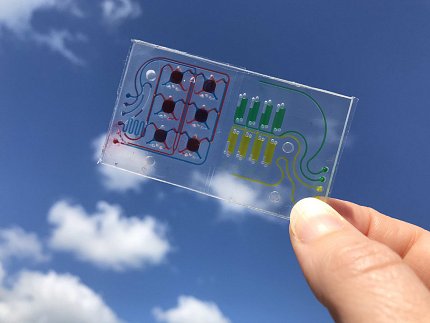Aboard the ISS
NIH Science in Space

Photo: NASA
Astronaut David Saint-Jacques poses for a picture while he grabs a small black box that’s floating in space. The box contains an NIH-funded experiment—including the hardware to run it—that could help scientists on Earth better understand how bone, cartilage and the immune system interact after a knee joint injury. This project is among four from NCATS and one from NCI that blasted off on May 4 to the International Space Station (ISS).
The NCATS projects are part of the “Tissue Chips in Space” program. Tissue chips are about the size of a thumb drive. They contain tiny chambers where human cells live, grow and do their thing. Scientists use tissue chips to study diseases that affect certain parts of the body. They can also use them to test the potential effects of drugs on organs or tissues.
NCATS launched the Tissue Chips in Space program with the ISS National Lab in 2016 (NIBIB joined in 2017) to rapidly evolve tissue chip technology for addressing critical drug development needs. Late last year, tissue chips made their first space flight.
Space is a great place to use tissue chips. That’s because microgravity appears to accelerate disease-like processes, including ones related to aging.

Photo: Lucie Low
The tissue chips on the May flight mimic lung infection and bone marrow response, bone and cartilage, the kidney and the blood-brain barrier that protects our brain from infections and toxins in the blood. This mission is to understand how the tissues change in reduced gravity and to develop automated versions of the tissue chip technology. On a future mission, the chips will be used to test potential drug therapies on the biological processes similar to disease and aging observed during the initial mission.
Also on board the orbiting lab is a project from the NCI Experimental Therapeutics (NExT) Program’s Chemical Biology Consortium. The goal of the project is to crystallize Taspase 1—a protein involved in cancer—in microgravity to better understand its complex, three-dimensional structure. Knowing the structure could help guide the design of potent drugs.—Emily Marti
